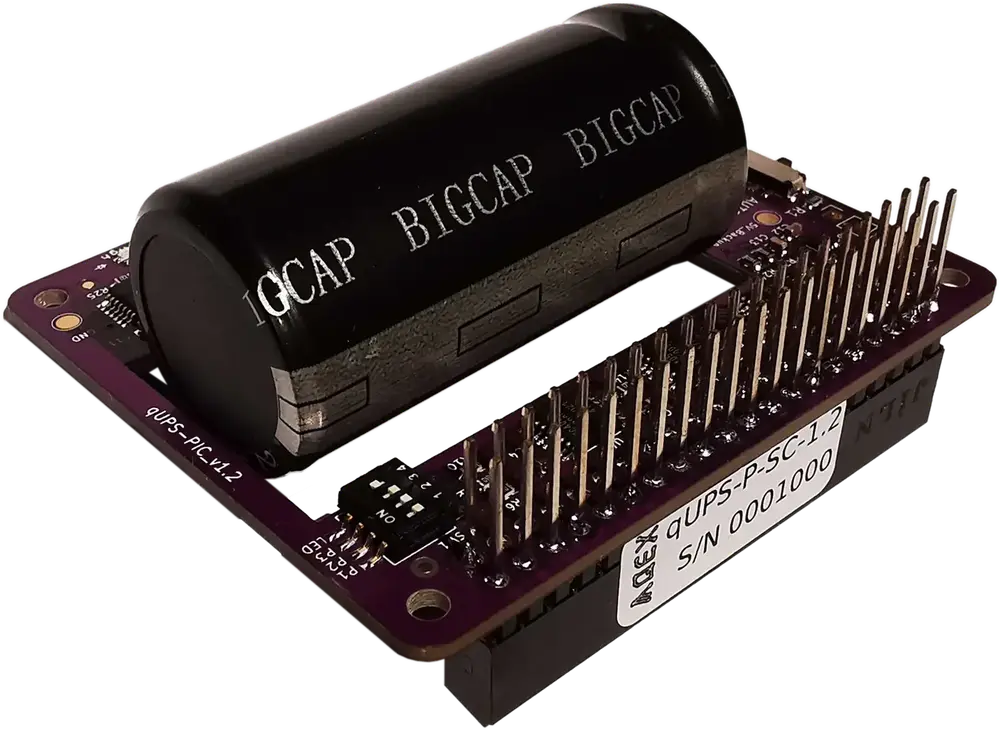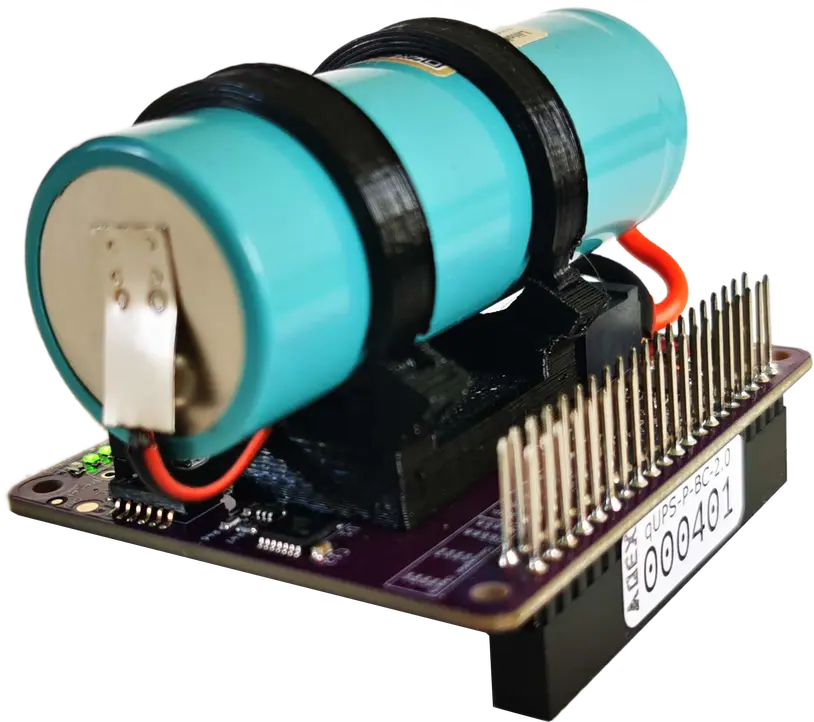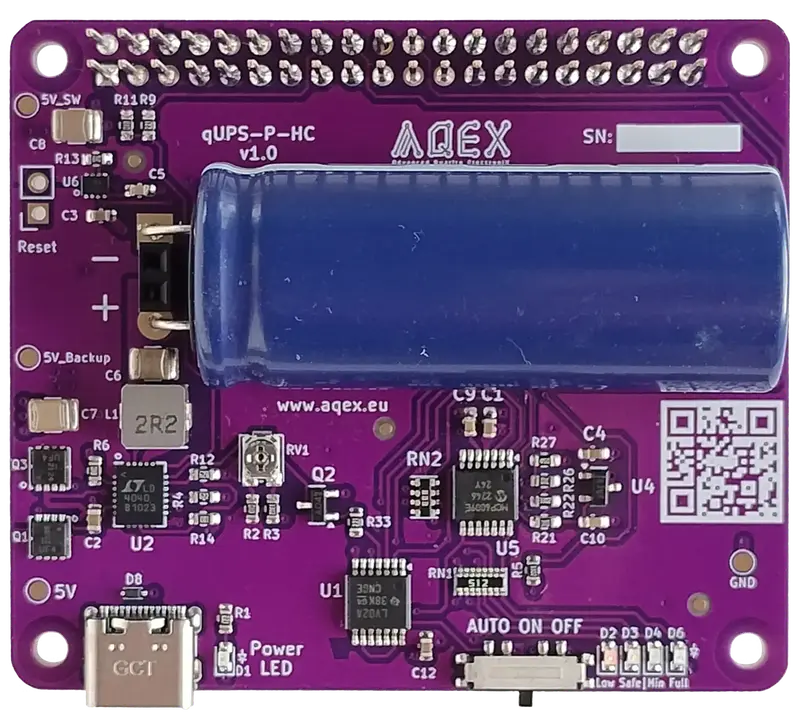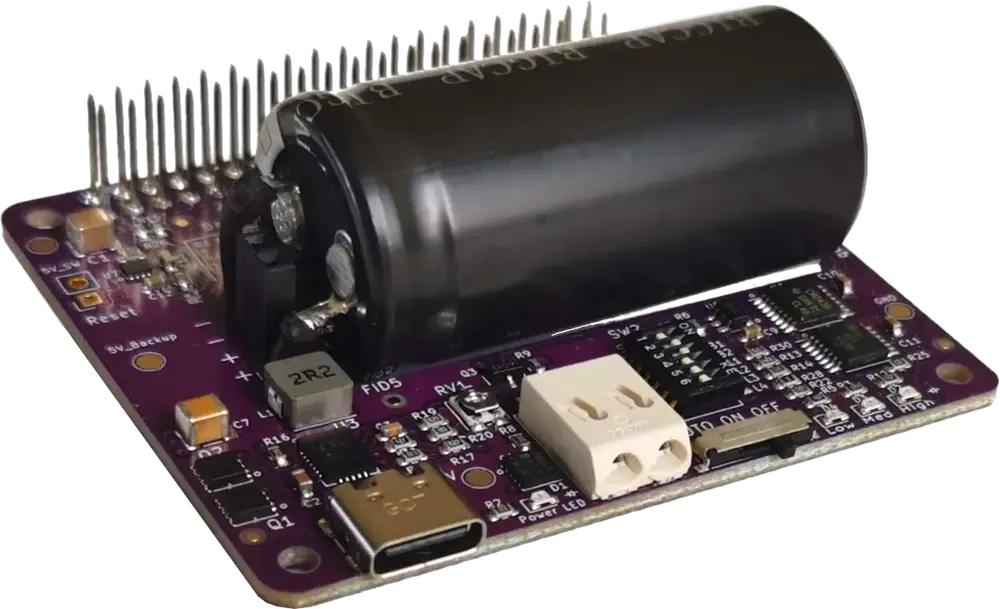
Uninterruptible Power for Your Raspberry Pi.
Protect your work with a seamless power backup. Our family of Raspberry Pi HAT-format UPS modules provides reliable power, so you can focus on building and creating without interruption. Choose from a variety of advanced battery and supercapacitor options.
Core Features Shared by All qUPS HATs
From Factor
For easy assembly, qUPS has HAT form factor. Simply connect it via the 40 pin header.
High Efficiency
Highly efficient boost converter for increasing the backup time.
Minimize inline energy loss
Offline topology - very efficient in inline state. Disadvantage: very short (<1ms) voltage degradation at power loss. Raspberry Pi can handle such issue.
Stackability
Pins on the connector are long ones, all can be accessed from the top of the product.
Main power connector
System is powered primarily via USB type C connector. Input voltage is 5V.
Communication Ability
Capable of warning the Raspberry Pi in case of input power loss, and at low energy level of the energy storage for proper shutdown.
GPIO communication
Easy programming. Avoid extra load on capacitance limited I2C bus. Only 3 GPIO ports for communication.
Reliable connection
Massive, soldered pin header for power and signal connection. Pogo pins are not reliable.
Software
All qUPS has the same control software. C++ and python supported.
Mode selector
3 modes: AUTO, ON and OFF
Reset
Built in reset connector. Power of Raspberry Pi can be controlled by external logic via this connection.
Adjustable input threshold
There is a level of the input voltage, where the system switch to backup state. This level can be adjusted.
Zero firmware
Shutdown issue handling
Safe boot
Avoid restart cycle
On mode – the reason
qUPS HAT Feature Comparison





With Supercapacitor
With Hybrid Capacitor
With Battery
qUPS HAT Family Manuals & Resources
Github
More information, user manual and control software (C++ & Python) can be found on Github.



